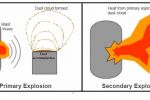Quick Reads
Feb 2nd, 2014 |
By Michael Bittner

Use of electronic hazardous waste manifests (e-Manifests) came one step closer in the United States on January 15th when the U.S. Environmental Protection Agency (EPA) issued a final rule authorizing the use of e-Manifests. This will allow the current process, which requires paper forms, to be streamlined and greatly reduce the millions of paper manifests
[continue reading…]
Posted in Quick Reads |
No Comments »
Tags: e-manifest, EHS, Environmental, hazardous waste, Health and Safety
Jun 30th, 2013 |
By Nina Wolgelenter

People, like machinery, tend to break down in extreme conditions. As temperatures rise, productivity falls, safety becomes questionable and comfort is no longer. Heat stress is defined as a group of conditions that result from being overly exposed to heat or overexertion in excessive ambient temperatures, a common occurrence in industrial spaces during the summer
[continue reading…]
Posted in Quick Reads |
No Comments »
Tags: Big Ass Fans, fans, Health and Safety, heat stress, safety
Mar 9th, 2013 |
By EHS Journal

The vast majority of students who attend safety and health training sessions are adults who already possess the knowledge, skills, and abilities to work in their current occupations. The objective of safety and health training is to provide additional knowledge, skills, and attitudes to assist workers in recognizing and taking action to correct hazards in their current work environments. Health and safety trainers who are seeking to improve the effectiveness of their training program should review the following summary of adult learning principles published by U.S. OSHA.
Posted in Quick Reads |
1 Comment »
Tags: adult learning, Environmental, Health and Safety, OSHA, Susan Harwood Training Grant Program, training
Sep 16th, 2012 |
By EHS Journal

Results of the 2012 Dow Jones Sustainability Indexes (DJSI) review were released on September 13, 2012 by SAM, the investment boutique focused exclusively on sustainability investing, and S&P Dow Jones Indices. Forty-one companies were added and 41 companies were deleted from the DJSI World index resulting in a total of 340 component companies for
[continue reading…]
Posted in Quick Reads |
No Comments »
Tags: DJSI, Dow Jones Sustainability Index, rankings, SAM, sustainability, sustainability reporting
May 13th, 2012 |
By Marc Karell

On December 30, 2011, an article titled The World’s Largest Environmental Consulting Firms was posted in the EHS Journal. The article highlighted the “Global 12,” the 12 largest environmental consulting firms. These are firms that have many offices located, in most cases, around the world, and they offer a wide breadth of environmental, health, and
[continue reading…]
Posted in Quick Reads |
2 comments
Tags: EHS consulting, EHS management, environmental consulting, health and safety consulting
Dec 16th, 2011 |
By Sally Li

On November 1, 2011, the amended China Provisional Regulation of Resources Tax (资源税暂行条例)[1] came into force. The amended regulation imposes a five to ten percent tax rate on the sale of crude oil and natural gas. The tax rate for rare earth ores and coking coal also increased, while the tax rate for regular coal,
[continue reading…]
Posted in Environmental Management, Quick Reads |
No Comments »
Tags: 12th Five-Year Plan, China, energy conservation, environmental law, environmental protection, resources tax reform
Nov 3rd, 2011 |
By Michael Bittner

Nonfatal workplace injuries and illnesses among private industry employers declined in the United States in 2010 to a rate of 3.5 cases per 100 equivalent full-time workers. Nearly 3.1 million injuries and illnesses were reported among private sector industry employers in 2010, down from 3.3 million reported in 2009. The health care and social assistance industry sector (case rate of 5.2) had more reported illnesses and injuries than any other sector, and public sector employees are injured at a rate that is approximately 60 percent higher than the private sector rate. [continue reading]
Posted in Quick Reads |
No Comments »
Tags: case rate, incident rate, OSHA, safety, safety statistics, workplace injuries
Jul 17th, 2010 |
By Joe Baker

Are you feeling a little unsettled about how to demonstrate sustainability in your day-to-day health and safety practice? This article explores how a company can protect one of its most important sustainable resources, its employees, through implementation of a behavior-based safety program.
Posted in Health and Safety, Quick Reads |
No Comments »
Tags: behavior-based safety, ERM, sustainability
Jan 9th, 2010 |
By Dave Scott

Over the years, combustible dusts have been involved in a number of fires and explosions. This article explains secondary dust explosion hazards and provides recommendations for preventing dust explosions.
Posted in Health and Safety, Quick Reads |
No Comments »










